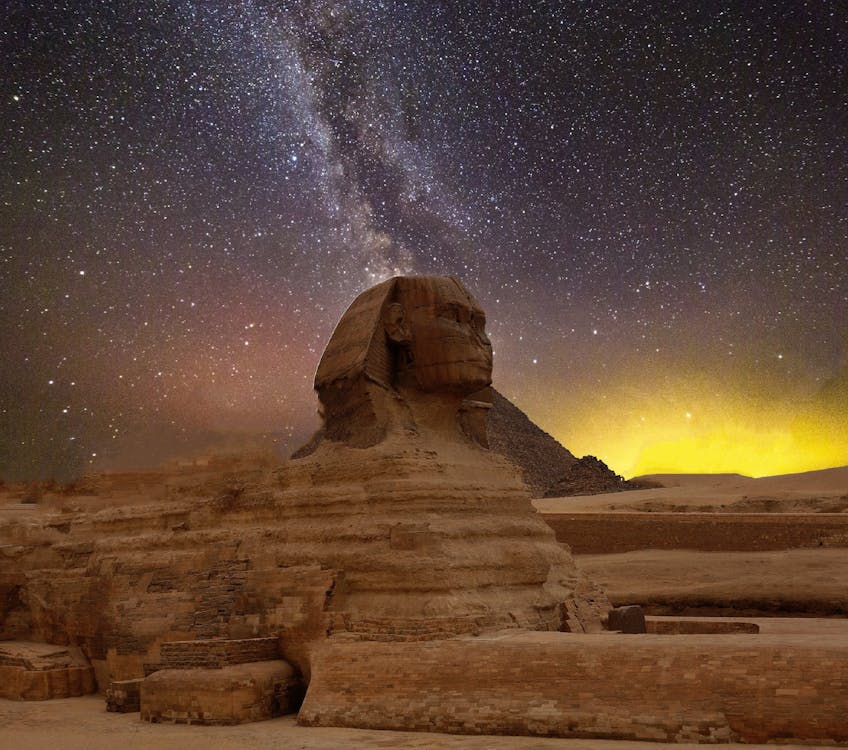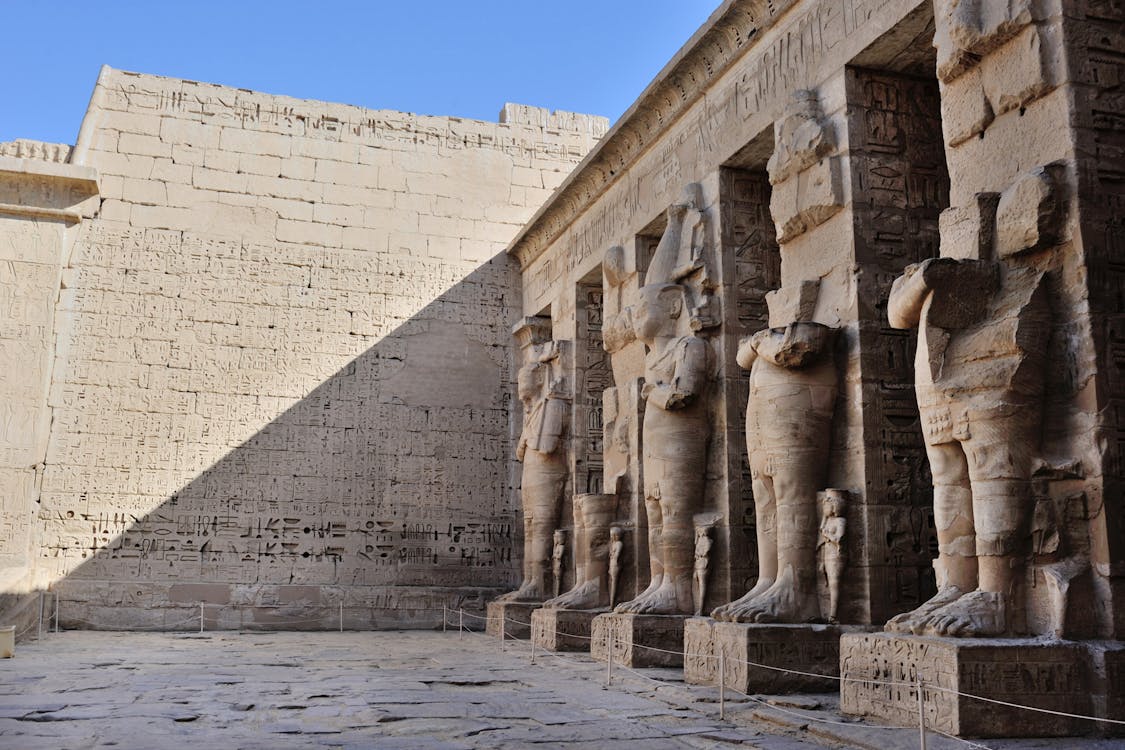I’ve always loved Egypt and the ancient history. I once wanted to do my essay about it, because I also knew a lot about it due to books my grandpa gave me when I was younger, but my teacher at the time said I was too dumb for it. Oh well, it left me to do research on my own and write my own essay. My knowledge about ancient Egypt contains many facts, so I’m here to share a couple!
- Cleopatra wasn’t Egyptian
Born in Alexandria, Cleopatra VII was part of a long line of Greek Macedonians who were originally descended from Ptolemy I, one of Alexander the Great’s most trusted lieutenants. The Ptolemaic dynasty ruled Egypt from 323 to 30 BC, and most of its leaders remained Greek in their culture and sensibilities. In fact, she was known as one of the first members of the Ptolemaic dynasty to speak the Egyptian language.
2. Forged peace treaties
For over two centuries the Egyptians fought against the Hittite Empire for control of lands in modern day Syria. The conflict was the reason for bloody battles like the Battle of Kadesh in 1274 BC, but by the time of Pharaoh Ramesses II, no one was declared a clear victor. With both the Egyptians and The Hittites who were threatened by other people in 1259 BC. Ramesses II and the Hittite King Hattusili III negotiated a famous peace treaty. This agreement ended the conflict and stipulated that the two kingdoms would help each other as a third party would plan an invasion on them. The Egyptian-Hittite Treaty is one of the oldest surviving peace agreements, and a copy can be seen above the entrance to the United Nations Security Council Chamber in New York.
3. They loved board games
After a long day of work, Egyptians often relaxed by playing board games, including Mehen and Dogs and Jackals. But perhaps the most popular one was a game of chance known as Senet. This game dates back to 3500 BC. and was played on a long board painted with 30 squares. Each player had a set of pieces that were moved across the board according to dice or throwing sticks. Paintings show Queen Nefertari playing Senet, and pharaohs like Tutankhamun even had game boards buried with them in their tombs.

4. Women and their rights
Although publicly considered inferior to men, Egyptian women enjoyed a great deal of legal and financial independence. They could buy and sell property, serve on juries, draft wills, and even make legal contracts. They didn’t usually work outside the home, but those who did received equal pay for the same work as men. They also had the right to divorce and remarry. Egyptian couples were even known to negotiate an ancient prenuptial agreement. It contained all the property and wealth that the woman had brought into the marriage, and guaranteed that if they divorced, she would be compensated.
5. Workers organise labor strikes
Egyptian workers weren’t afraid to protest for better working conditions. The most famous example came in the 12th century BC. during the reign of Pharaoh Ramses III of the New Kingdom. When workers were building the royal necropolis at Deir el-Medina, they didn’t receive their usual grain payment. So, they organised one of the first recorded strikes in history. The protest took the form of a sit-in: the workers entered nearby mortuary temples and refused to leave until their grievances were heard. The gamble worked, and the workers ended up getting their rations in arrears.
6. Pharaohs and overweight
In Egyptian art, pharaohs are often depicted as graceful and stately, but this didn’t equate to the truth. The Egyptian diet of beer, wine, bread, and honey was high in sugar. Examination of mummies has shown that many Egyptian rulers were unhealthy, overweight and even diabetic. An example is the legendary Queen Hatshepsut, who lived in the 15th century BC. While her sarcophagus portrays her as slim and athletic, it’s believed she was actually obese and balding.

7. Pyramids
The life of a pyramid builder wasn’t easy. Workers’ skeletons showed signs of arthritis and other conditions. However, there’s evidence that the huge tombs weren’t built by slaves, but by paid workers. These ancient builders were a mix of skilled craftsmen and temporary hands. Graffiti near the monuments suggests that some of them have given humorous names to their crew, such as Menkaure’s drunks or Khufu’s friends. The ancient Egyptians weren’t averse to keeping slaves, but they seem to have used them mainly as farm laborers and domestic servants.
8. King Tut’s death
Little is known about the life of the boy pharaoh Tutankhamun, but some say they know how he died. Scans of the young king’s body show that he was embalmed without his heart or chest wall. This drastic departure from traditional Egyptian burial practice suggests that he may have suffered a gruesome injury before his death. One of the most likely causes of this wound would have been a hippopotamus bite. The Egyptians hunted the beasts for sport, and statues found in King Tut’s tomb even depict him throwing a harpoon. If the young Pharaoh was indeed fond of this dangerous game, his death could have been the result of a hunt that went horribly wrong.
9. Doctors
An ancient physician was usually a centipede, but Egyptian doctors sometimes focused on healing only one part of the human body. This early form of medical specialisation was first noted in 450 BC. by the traveller and historian Herodotus. He discussed Egyptian medicine and said these specialists had specific names. Dentists were known as doctors of the tooth, while the term for proctologists literally translates to shepherd of the anus.

10. Animals as pets
They saw animals as incarnations of the gods and were one of the first civilisations to keep pets. They were especially fond of cats, which were associated with the goddess Bastet. They also respected hawks, ibises, dogs, lions, and baboons. Many of these animals had a special place in the Egyptian home, and they were often mummified and buried with their owners after death. Other animals were specially trained to work as helpers. Egyptian police officers were known to use dogs and even trained monkeys to aid them on patrols.
11. Makeup
Both men and women were known to wear makeup, which they believed was given the protection of the gods Horus and Ra. The makeup was made by grinding ores such as malachite and galena into a substance called kohl. It was then applied around the eyes with utensils made of wood, bone and ivory. Women also stained their cheeks with red paint and used henna to colour their hands and fingernails. Both wore perfumes made of oil, myrrh and cinnamon. They believed their makeup had magical healing powers, which is somewhat true: some of them helped prevent eye infections.
Love, Deem/Skye Lewis ❤
You can also follow me on Facebook, Twitter, Instagram and Twitch
Image source: Pexels

Oh I had no idea! So cool to know this!
LikeLiked by 1 person
Glad to hear!
LikeLike
I’m pleased to know women had much better agreements than we do now
LikeLiked by 1 person
Right?!
LikeLike
I had no idea that Cleopatra wasn’t an Egyptian :O
LikeLiked by 1 person
Now you do!
LikeLike
Wow, I honestly didn’t know anything, so thank you!
LikeLiked by 1 person
You’re welcome!
LikeLike
I’ll never stop wondering how they built those pyramids
LikeLiked by 1 person
Haha same xd
LikeLike
That teacher that called you dumb, is dumb themselves
LikeLiked by 1 person
Couldn’t have said it better myself!
LikeLike